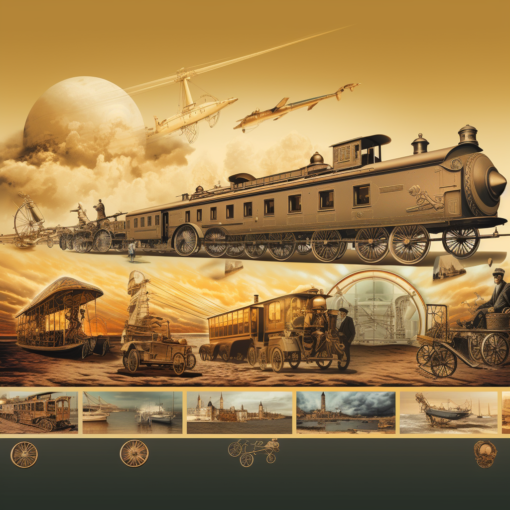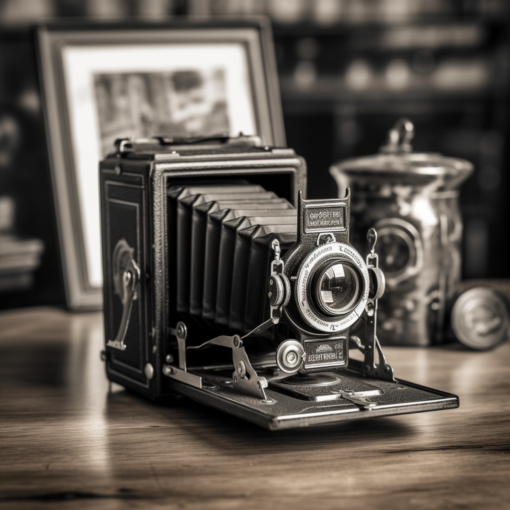Greetings, dear readers!
Today, let’s embark on a journey through time. And what better vessel for such a voyage than the very device humans invented to keep track of it – the clock?
From sundials to smartwatches, humans have found ingenious ways to harness and measure the passage of time, each invention a reflection of the scientific and cultural context of the era.
Our journey begins in the ancient world, where the sun and the shadows it cast were the earliest timekeepers. The sundial, developed independently in many parts of the world, was among the first instruments humans used to mark time. It was ingenious in its simplicity – a stick or obelisk casting a shadow on a circle or semi-circle marked with hours. However, its utility was curtailed by clouds and the inevitable darkness of night.
With the flow of time came the flow of water. Clepsydras, or water clocks, made their appearance in various civilizations, including Egypt and Greece, around 1500 B.C. These clocks measured time through the controlled flow of liquid into or out of a vessel.
The hourglass, a relative of the water clock, made its debut much later, around the 8th century A.D. With sand replacing water and a more compact design, the hourglass was portable, reliable, and not influenced by weather or temperature. It found uses in various fields from cooking to naval navigation.
Then came a significant advancement – the mechanical clock. First developed in medieval Europe, these intricate devices used weights and escapements to control the motion of gears. The invention of the mainspring in the 15th century led to smaller, more portable timepieces – paving the way for pocket watches and eventually wristwatches.
The 20th century saw the introduction of electric clocks, using the steady frequency of electric currents to maintain accuracy. Then came atomic clocks, the most accurate timekeepers to date, which measure the vibrational frequency of atoms.
Now, we live in an age where the ticking hands of a clock have been replaced by digital displays on our phones and smartwatches, constantly synced with atomic clocks for near-perfect precision.
Timekeeping has come a long way since the days of sundials and water clocks. It has transcended its original purpose of simply measuring hours and minutes. It now helps us navigate the world, cook our food, manage our schedules, and even explore the cosmos.
However, in our modern race against time, let’s not forget to take a moment, slow down, and appreciate the wonder of the present. After all, time, dear readers, is the stuff life is made of.
Until next time,
Percival Q. Higginbottom

Further Reading:
- The Evolution of Timekeeping: An insightful Britannica article that offers a comprehensive overview of the history of clocks and the progression of timekeeping.
- A Walk Through Time – The Evolution of Time Measurement through the Ages: The National Institute of Standards and Technology provides a detailed timeline of timekeeping devices and the advances that led to our current understanding of time.
- The History of Clocks and Watches: This site explores the evolution of timekeeping devices with particular emphasis on watches, their history, and their impact on society.





9 thoughts on “The Evolution of Clocks: Timekeeping through the Ages”
Thanks for sharing. I read many of your blog posts, cool, your blog is very good.
Your article helped me a lot, is there any more related content? Thanks!
Can you be more specific about the content of your article? After reading it, I still have some doubts. Hope you can help me.
Your article helped me a lot, is there any more related content? Thanks!
Thanks for sharing. I read many of your blog posts, cool, your blog is very good.
The gamespkdownload site is super easy to use. Found exactly what I was looking for and the download was quick. Check it out: gamespkdownload
Can you be more specific about the content of your article? After reading it, I still have some doubts. Hope you can help me. https://www.binance.com/en/register?ref=JHQQKNKN
I don’t think the title of your article matches the content lol. Just kidding, mainly because I had some doubts after reading the article. https://accounts.binance.info/register-person?ref=IXBIAFVY
Yo, 58win1vip, heard about this site from a buddy. Gave it a look, seems decent enough. I’d say give it a try: 58win1vip